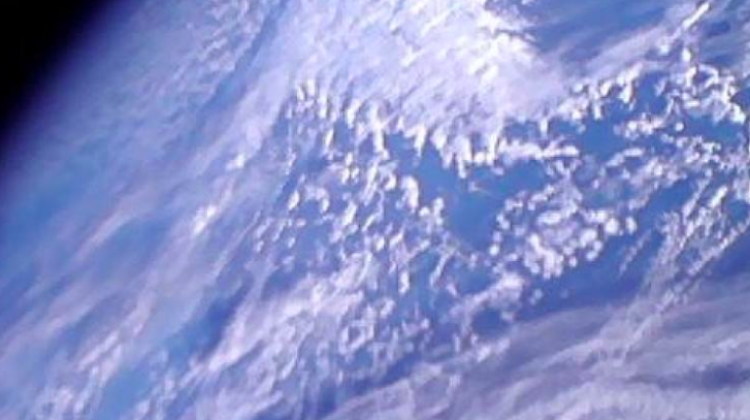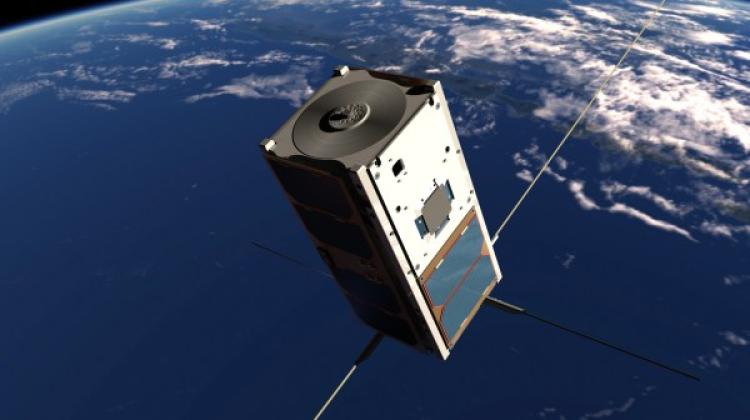PW-Sat2 - the first Polish satellite that took a photo of the Earth
 The first Polish satellite image from PW-Sat2. Source: PW-Sat2
The first Polish satellite image from PW-Sat2. Source: PW-Sat2
Southern Sweden, dense clouds over Norway, a fragment of the North Sea and the Baltic Sea - these areas are in the image taken by the student satellite PW-Sat2. According to its creators, it is the first Polish satellite image of the Earth registered by Polish artificial satellite.
The satellite built by members of the Students Space Association at Warsaw University of Technology was launched into orbit onboard the Falcon 9 rocket from the Vandenberg base on December 3. According to its creators, the initial phase of the PW-Sat2 mission has been successfully completed - the satellite is working properly and transmits telemetry data.
As part of the mission, on December 5 at about 10:38 UTC (11:38 CET), PW-Sat2 appeared in the field of view of the ground station in Warsaw and the operators sent a command to take a photo. "It will go down in history as the first Polish satellite image of the Earth registered by Polish artificial satellite" - the constructors emphasize in the press release.
But this is not the first Polish photograph of the Earth made from orbit, because one was taken with a hand-held camera in 1978 by astronaut General Mirosław Hermaszewski.
The image (https://radio.pw-sat.pl/gallery) was made when the satellite was already over the Dutch coast. It shows the southern Sweden, dense clouds over Norway, a large fragment of the North Sea, and even a part of the Baltic Sea. In one corner you can see the black triangle of the Arctic Circle where it is now night, and in the upper right corner a small triangle, which is a fragment of the structure of the satellite.
"The image was received via ground stations in Warsaw, at the Faculty of Electronics and Information Technology, and in Gliwice at the headquarters of our partner Future Processing, and by radio amateurs, who sent the received data to radio.pw-sat.pl" - explains Dominik Roszkowski, the PW-Sat2 project coordinator.
The first image in two resolutions (160×128 pixels and 320×240 pixels) was sent on December 5. The next day (December 6), during the next communication sessions, the same photo was downloaded in the resolution of 640×480 pixels, the highest one offered by cameras on the PW-Sat2 satellite.
"Due to the satellite`s power restrictions and the radio link bandwidth, even sending a relatively low-res photo takes several contacts with the ground station, which last a maximum of about 10 minutes. The satellite currently performs up to six such flights over Poland per day and with each connection we received another fragment of this historical photo" - the constructors explain in the release.
According to the release, the cameras on board PW-Sat2 are not intended for Earth observation. Their main task is to verify the opening of the deorbitation sail at the end of the mission. Therefore, the cameras are directed at an angle to the walls of the satellite and a fragment of the device is in their field of view.
In the next few days, PW-Sat2 will perform solar sensor tests. After 40 days, at the latest in mid-January, the deorbitation sail will be opened.
The sail is expected to accelerate the process of satellite deorbitation. Its opening will increase the surface of PW-Sat2 and its aerodynamic drag, and consequently gradually lower the orbit of the satellite. This will shorten the satellite`s lifetime in orbit from over 15 years to a dozen months.
This process is extremely important - it can contribute to dealing with the problem of space debris - objects that remain in orbit after the completion of their own missions and threaten other, still active satellites (because they can not be controlled any more). Researchers around the world are looking for methods that will help solve this problem. They are looking for ways to remove existing space debris from space and prevent the creation of new debris in the future.
PAP - Science in Poland
agt/ ekr/ kap/
tr. RL
Przed dodaniem komentarza prosimy o zapoznanie z Regulaminem forum serwisu Nauka w Polsce.
















